5 Powerful Employee Advocacy Examples [Top Brands in Action]
In today’s hyperconnected digital world, employees’ voices have become one of the most powerful tools for building brand awareness and trust.
When employees strategically share content on social media platforms and engage authentically with their audience, they nurture trust and credibility.
This article explores real-world employee advocacy examples from top brands and the impact their programs have achieved. We’ve also shared some effective advocacy strategies you can implement.
TL; DR—Employee Advocacy Examples
Curious about how top brands are transforming employees into powerful brand advocates?
Have a look at some of the inspiring examples, which we’ll take a deeper look at later in the blog:
- Starbucks
- Dell
- Cisco
- Adobe
Fun Fact: All of these companies leverage LinkedIn for employee advocacy to showcase thought leadership and attract exceptional talent. You should do so, too.
Where do you start?
At Crackerjack Marketing, we have over 15 years of experience enhancing the LinkedIn presence of executives and their corporate teams. We can help you tailor your LinkedIn content to position executives as thought leaders and elevate individual employee profiles to share authentic content.
Let’s chat and see how we can partner to optimize your employees’ LinkedIn profiles, showcasing a consistent and professional brand image.
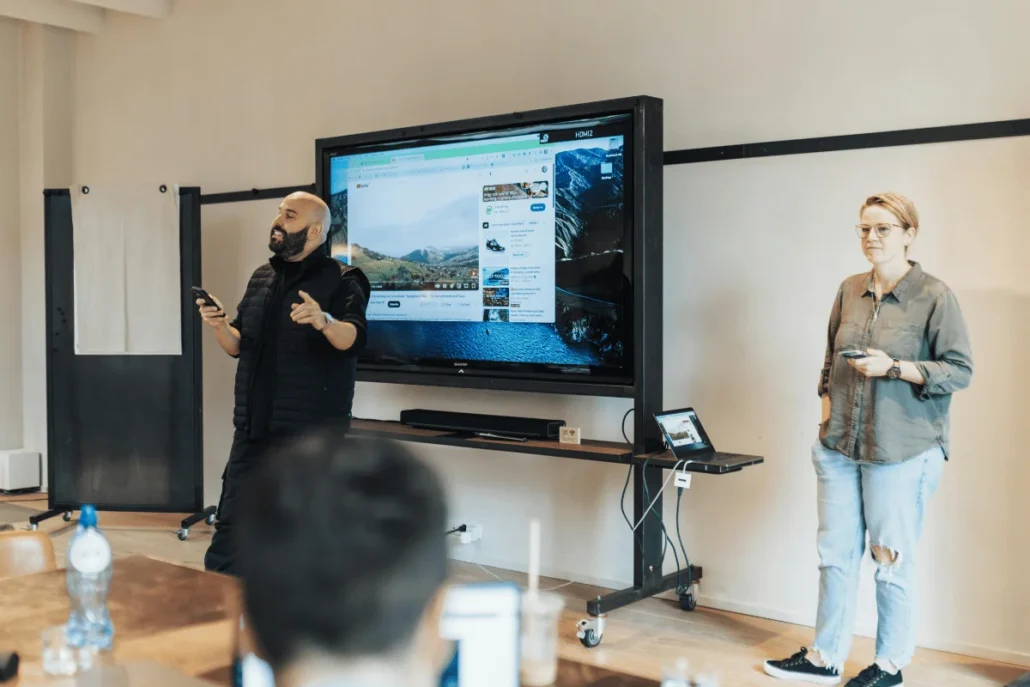
What Is Employee Advocacy?
Employee advocacy is a marketing strategy in which employees promote their company’s brand, products, or services through their channels, mostly on social media.
However, in this case, it’s not just sharing posts or content on various pages; it’s about the employee acting as an ambassador for the brand and selling a positive idea to people.
Employee advocacy has the upper hand over traditional marketing efforts, as employees are a relatable and trustworthy medium to advocate for the company. This gives you an added advantage in spreading awareness and building clients’ trust in your brand.
The main goal of employee advocacy is to increase brand awareness and build a positive company reputation.
Note: Proper training is necessary before launching an employee advocacy program. Employees must understand the company’s objectives and how their voice should align with the brand’s representation.
More on this in the following sections.

Why Is Employee Advocacy Important?
Employee advocacy is vital in planning marketing strategies for successful brand awareness.
Let’s find out why:
Builds Trust and Credibility
Peer messages are usually perceived as more authentic than those from companies.
Your employees’ messages can create a trustworthy environment for your online connections, attracting more people to your brand.
Increases Brand Awareness
Employees have networks of people who may or may not know your brand. When these employees share your brand content online, the audience can learn about the brand and attract more traffic.
This means the brand will gain exposure and reach a wider audience.
Enhances Recruitment
Advocacy gives potential candidates an overview of your company culture, making it a powerful recruitment tool. It provides broad exposure and increases your company’s chance of attracting well-skilled applicants.
Supports Business Growth and Sales
Employee content can nurture prospects and move them further down the sales funnel.
Sales teams that use employee advocacy to share valuable content often see higher conversion rates, which can lead to more sales.

Common Employee Advocacy Strategies That Work
Now that we’ve recognized the importance of employee advocacy for your brand, you must employ a good strategy to ensure the success of your program.
Discover the six strategies that work for top brands in their advocacy programs:
1. Provide Shareable Content and Toolkits to Your Employees
Companies usually equip their employees with ready-to-share content, templates, and social media toolkits to maintain the effectiveness and consistency of their advocacy programs.
Practical example: The Salesforce brand offers toolkits and encourages employees to share company success, leading to 25,000 employees becoming brand ambassadors and a 2,033% ROI.
2. Showcase Employee Stories and Experiences
Encourage your employees to share their personal and professional stories and experiences, or behind-the-scenes content on their pages. This will help build your brand’s credibility and reach.
Practical Example: Reebok asks employees to post about their fitness journeys using the hashtag #fitasscompany, aligning advocacy with brand values.
3. Gamify the Participation and Offer Incentives
Gamify employee participation through leaderboards, rewards, or contests to boost engagement rates and break the monotony.
Practical Example: Randstad gamified its program, resulting in over 2,000 brand ambassadors and $1.5 million in earned media value.

4. Streamline Your Content Sharing With Advocacy Platforms
Effective use of platforms like Clearview Social or similar tools simplifies content sharing and attracts higher results.
Practical Example: Sumo Logic’s use of Clearview Social generated $670,561 in earned media value and over 726,000 shares in one campaign.
5. Offer Social Media Training and Guidelines
You must train your employees on social media best practices and provide them with clearly defined guidelines. This will build their confidence as your brand’s ambassadors and ensure brand consistency.
Practical Example: Dell’s mandatory four-hour training helped its audience grow to 1.2 million annually.
6. Set an Example as a Leader
Brand leaders should also actively advocate to set the organization’s tone. It will motivate the employees to participate.
Practical Example: Tesla’s CEO, Elon Musk, is an active advocate, which has helped him push EV-friendly policies.
Most of these top brands leverage LinkedIn for their advocacy efforts (in addition to other social media channels). Do you want your executives and team to effectively represent your brand on LinkedIn?
We can help you.
Our team of LinkedIn specialists:
- Create engaging LinkedIn messages and help your team (including your company’s executives) deliver them authentically.
- Uses data-driven marketing strategies that align with your target audience on LinkedIn and drive measurable results.
Speak with us, and let’s discuss how we can empower your LinkedIn advocates to drive engagement and build your brand’s credibility!

Employee Advocacy Examples—How Top Brands Do It
Now that we’ve discussed top advocacy strategies, let’s see them in action from real-world employee advocacy examples from top brands:
1. Starbucks
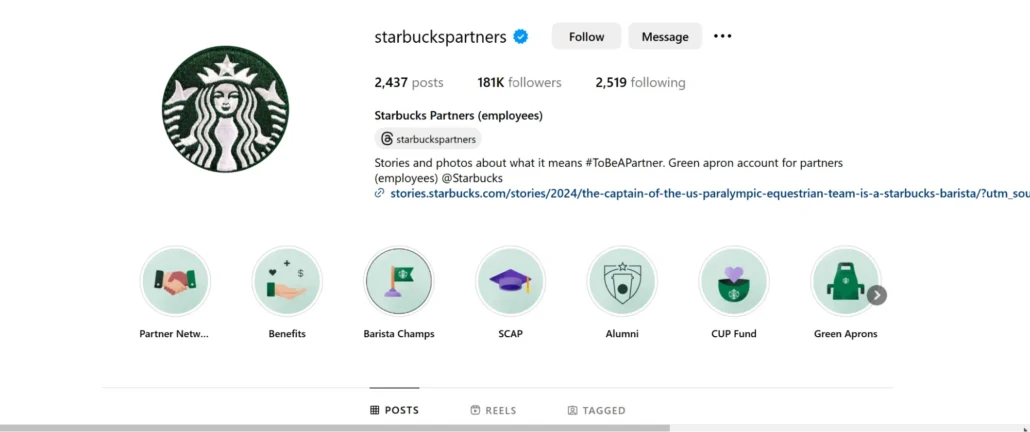
Starbucks is renowned not only for its high-quality coffee but also for its steadfast dedication to employee advocacy.
They start by referring to their staff members as partners, representing a deeper company culture of respect, inclusivity, and unity.
Starbucks has established an online forum, #tobeapartner, where the employees share their stories and brand experiences. The #tobeapartner campaign has gathered high Instagram engagements and ranks highly according to the number of tweets on X.
Result: Starbucks employee advocacy has increased the brand’s visibility and engagement on social media platforms.
2. Google
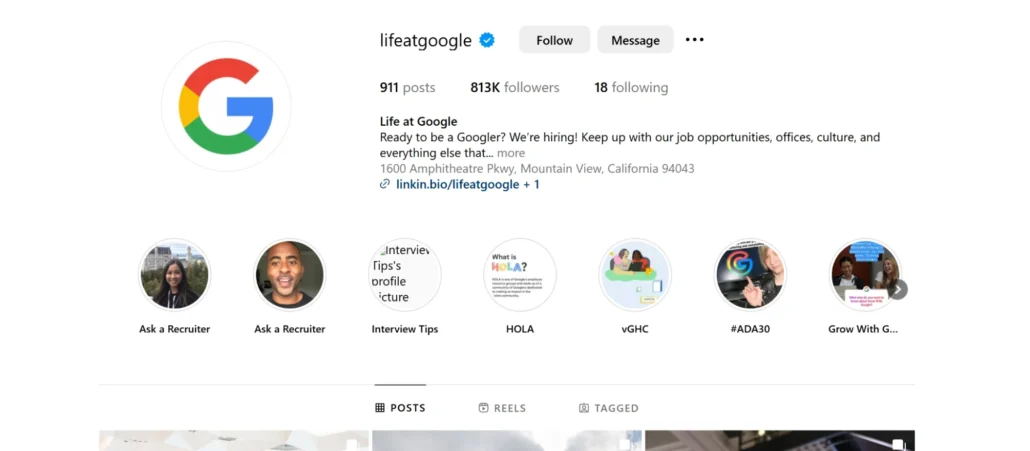
Google, the leading technology company, might make you think they wouldn’t need any help from their employees promoting their company. They have dedicated pages @LifeAtGoogle and hashtags #LifeAtGoogle across multiple platforms and on their blog.
Employees and interns (Googlers) share stories about their roles and career paths, motivating new applicants.
Result: The company has attracted top talent and enhanced Google’s image as an employee-mindful company, reinforcing its reputation.
3. Dell
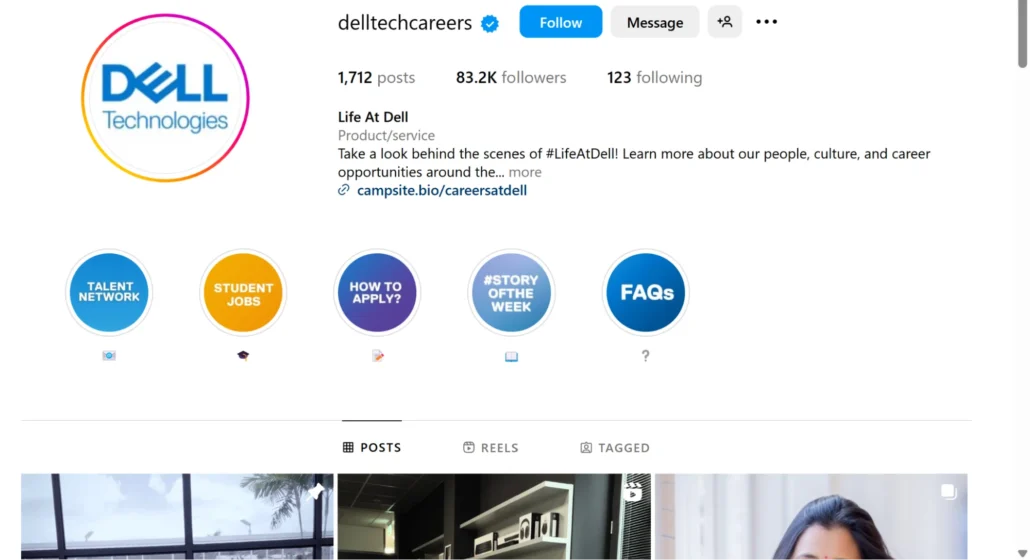
Dell Technologies, another technology company, also emphasizes employee advocacy, contributing to its long-term success.
The company has a training program designed to instill in its employees the skills to represent the company on social media.
Today, more than 10,000 Dell employees have been trained, enabling them to engage effectively and authentically online.
They also have an advanced social listening and triage program to mobilize advocates.
Results: Dell yielded more than 150,000 shares and 45,000 clicks to its website in the first 12 months. In total, the reach exceeds 1.2 million people.
4. Cisco
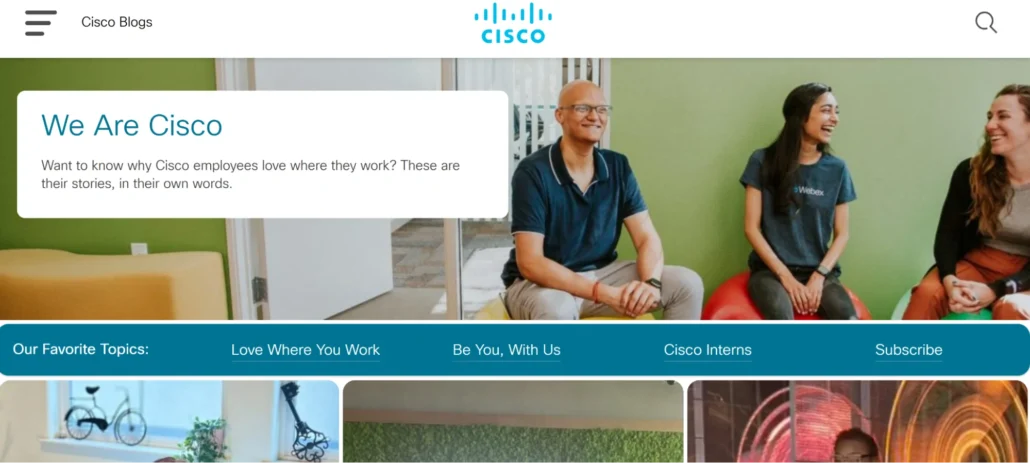
Cisco’s advocacy campaign, ‘We Are Cisco,’ encourages employees to share personal and professional stories about working at Cisco in their own words.
They also use hashtags like #WeAreCisco in their social media posts to promote brand advocacy to their online connections.
Cisco’s program is built on fostering inclusivity, and its messages are amplified across diverse audiences. The programs are well-optimized, making them user-friendly for employees.
By providing a platform for employees to express their voices, Cisco has strengthened its brand identity, and its message has reached a wider audience.
Result: The program increased Cisco’s engagement, with over 3,000 employees actively participating and generating an estimated market value of nearly $200,000 in four months.
5. Adobe
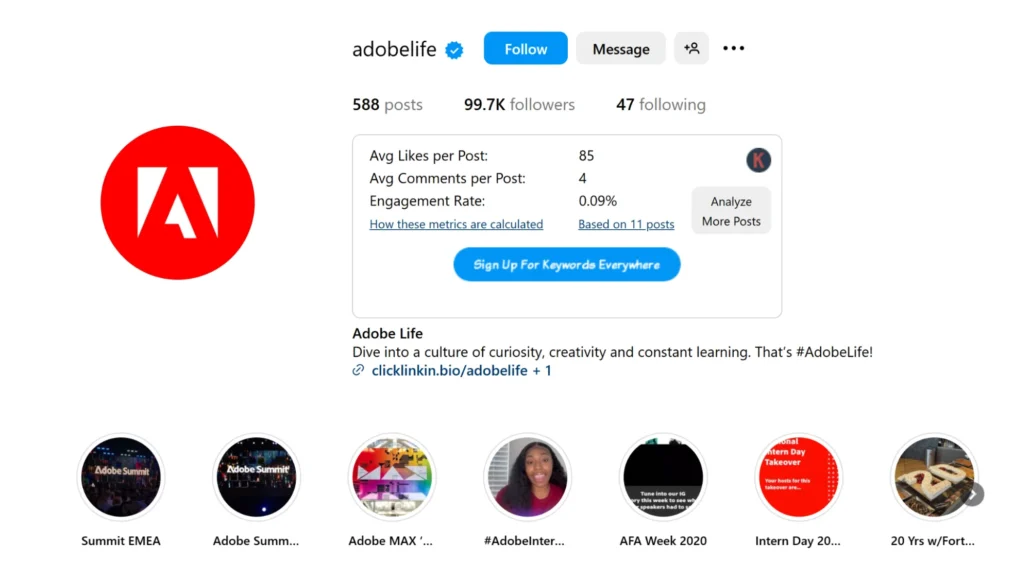
Adobe has made employee advocacy part of the company’s culture and created programs that empower employees to promote the brand.
Their social shift program enables employees to share content easily and confidently. Team members are encouraged to communicate the brand’s values, products, and culture on their social media profiles.
The company makes this easy by providing content, tools, and incentives that employees can use. This strengthens the employee’s brand while also promoting Adobe.
Adobe receives numerous benefits, including high engagement, increased brand reach, and stronger employee loyalty.
Results: The program expanded Adobe’s social reach by over 3 million users. Each member shared their content with an average audience of 4,000, fostering employee pride.
Curious to learn more? Explore other related blogs below:
- Employer branding on LinkedIn
- Corporate social media policy
- Building relationships using social media
Employee Advocacy Best Practices to Apply
Wish to nail your employee advocacy program like the companies mentioned above?
Follow these top tips:
- Promote a Positive Workplace Culture: An effective advocacy program begins with an encouraging organizational culture. Your employees’ enthusiasm for brand promotion naturally increases when they feel heard, respected, and aligned with your company’s mission.
- Set Clear Objectives: Ensure you set clear goals and have a target to improve your brand advocacy. Goals such as raising brand awareness, engagement, or website traffic show the program’s intended impact over time and help determine its direction.
- Prepare Your Staff for Successful Advocacy: Providing structured training empowers your employees to become confident and authentic. It also helps them know your brand values, messaging, and proper social media communication techniques.
- Create an Explicit Social Media Policy: Provide staff members with policies outlining appropriate and welcome online conduct. The policy should also include a ‘dos and don’ts’ section. A well-written policy ensures uniformity, safeguards a company’s reputation, and guides employees about participating.
- Acknowledge and Honor Advocacy Work: Appreciating deserving employees is necessary, motivating them to strive even more. You can even reward staff members who actively engage in advocacy to boost their morale and promote sustained participation.
- Monitor Performance and Adjust Your Approach: Use analytic tools to track employee-driven conversions, brand reach, and engagement. You can highlight success stories and improve your strategy by monitoring these numbers.

Frequently Asked Questions (FAQs)
Got questions? Below are quick answers to commonly asked questions about employee advocacy:
Is Employee Advocacy Different From Influencer Marketing?
Yes, there’s a difference between the two. Employee advocacy involves promoting a brand through internal staff members, while influencer marketing reaches out to external individuals with a large following.
They might sound similar, but employee advocacy often feels more genuine because it originates from the source.
Which Platforms Work Best for Employee Advocacy?
The best platform for employee advocacy mainly depends on your audience. Nonetheless, many industries favor Facebook, X, and LinkedIn.
Instagram and TikTok might also serve this purpose, but they are primarily for creative businesses.
Do Employee Advocacy Programs Need Incentives to Work?
Incentives for these programs are not mandatory. However, they can encourage staff members to take part.
Employees may share content more frequently if they receive rewards such as recognition, bonuses, or even professional enhancement opportunities.
Conclusion
As we’ve seen from the top brands, employee advocacy helps increase engagement, credibility, and brand awareness. Remember to implement the strategies and best practices to ensure the success of your advocacy program.
When employee advocacy is done correctly, it becomes a win-win for employees and the company.
Curious how to elevate your brand’s employee advocacy?
At Crackerjack Marketing, we will leverage your executives’ brands and create authentic content showcasing them as thought leaders. We’ll also empower your employees’ profiles to amplify your brand, making your company relatable and trustworthy to your target audience.
Let’s start the conversation by discussing how we can turn your employees into the best LinkedIn advocates!
She’s been in social media for over 20 years, and teaches digital marketing at universities in Barcelona and Bangkok.
Follow her on LinkedIn
for expert LinkedIn and marketing advice.
STEPHANIE SCHWAB
CEO & Founder
Stephanie is the Founder and CEO of Crackerjack Marketing.
She’s been in social media for over 20 years, and teaches digital marketing at universities in Barcelona and Bangkok.
Follow her on LinkedIn
for expert LinkedIn and marketing advice.
Categories
5 Powerful Employee Advocacy Examples [Top Brands in Action]
In today’s hyperconnected digital world, employees’ voices have become one of the most powerful tools for building brand awareness and trust.
When employees strategically share content on social media platforms and engage authentically with their audience, they nurture trust and credibility.
This article explores real-world employee advocacy examples from top brands and the impact their programs have achieved. We’ve also shared some effective advocacy strategies you can implement.
TL; DR—Employee Advocacy Examples
Curious about how top brands are transforming employees into powerful brand advocates?
Have a look at some of the inspiring examples, which we’ll take a deeper look at later in the blog:
- Starbucks
- Dell
- Cisco
- Adobe
Fun Fact: All of these companies leverage LinkedIn for employee advocacy to showcase thought leadership and attract exceptional talent. You should do so, too.
Where do you start?
At Crackerjack Marketing, we have over 15 years of experience enhancing the LinkedIn presence of executives and their corporate teams. We can help you tailor your LinkedIn content to position executives as thought leaders and elevate individual employee profiles to share authentic content.
Let’s chat and see how we can partner to optimize your employees’ LinkedIn profiles, showcasing a consistent and professional brand image.

What Is Employee Advocacy?
Employee advocacy is a marketing strategy in which employees promote their company’s brand, products, or services through their channels, mostly on social media.
However, in this case, it’s not just sharing posts or content on various pages; it’s about the employee acting as an ambassador for the brand and selling a positive idea to people.
Employee advocacy has the upper hand over traditional marketing efforts, as employees are a relatable and trustworthy medium to advocate for the company. This gives you an added advantage in spreading awareness and building clients’ trust in your brand.
The main goal of employee advocacy is to increase brand awareness and build a positive company reputation.
Note: Proper training is necessary before launching an employee advocacy program. Employees must understand the company’s objectives and how their voice should align with the brand’s representation.
More on this in the following sections.

Why Is Employee Advocacy Important?
Employee advocacy is vital in planning marketing strategies for successful brand awareness.
Let’s find out why:
Builds Trust and Credibility
Peer messages are usually perceived as more authentic than those from companies.
Your employees’ messages can create a trustworthy environment for your online connections, attracting more people to your brand.
Increases Brand Awareness
Employees have networks of people who may or may not know your brand. When these employees share your brand content online, the audience can learn about the brand and attract more traffic.
This means the brand will gain exposure and reach a wider audience.
Enhances Recruitment
Advocacy gives potential candidates an overview of your company culture, making it a powerful recruitment tool. It provides broad exposure and increases your company’s chance of attracting well-skilled applicants.
Supports Business Growth and Sales
Employee content can nurture prospects and move them further down the sales funnel.
Sales teams that use employee advocacy to share valuable content often see higher conversion rates, which can lead to more sales.

Common Employee Advocacy Strategies That Work
Now that we’ve recognized the importance of employee advocacy for your brand, you must employ a good strategy to ensure the success of your program.
Discover the six strategies that work for top brands in their advocacy programs:
1. Provide Shareable Content and Toolkits to Your Employees
Companies usually equip their employees with ready-to-share content, templates, and social media toolkits to maintain the effectiveness and consistency of their advocacy programs.
Practical example: The Salesforce brand offers toolkits and encourages employees to share company success, leading to 25,000 employees becoming brand ambassadors and a 2,033% ROI.
2. Showcase Employee Stories and Experiences
Encourage your employees to share their personal and professional stories and experiences, or behind-the-scenes content on their pages. This will help build your brand’s credibility and reach.
Practical Example: Reebok asks employees to post about their fitness journeys using the hashtag #fitasscompany, aligning advocacy with brand values.
3. Gamify the Participation and Offer Incentives
Gamify employee participation through leaderboards, rewards, or contests to boost engagement rates and break the monotony.
Practical Example: Randstad gamified its program, resulting in over 2,000 brand ambassadors and $1.5 million in earned media value.

4. Streamline Your Content Sharing With Advocacy Platforms
Effective use of platforms like Clearview Social or similar tools simplifies content sharing and attracts higher results.
Practical Example: Sumo Logic’s use of Clearview Social generated $670,561 in earned media value and over 726,000 shares in one campaign.
5. Offer Social Media Training and Guidelines
You must train your employees on social media best practices and provide them with clearly defined guidelines. This will build their confidence as your brand’s ambassadors and ensure brand consistency.
Practical Example: Dell’s mandatory four-hour training helped its audience grow to 1.2 million annually.
6. Set an Example as a Leader
Brand leaders should also actively advocate to set the organization’s tone. It will motivate the employees to participate.
Practical Example: Tesla’s CEO, Elon Musk, is an active advocate, which has helped him push EV-friendly policies.
Most of these top brands leverage LinkedIn for their advocacy efforts (in addition to other social media channels). Do you want your executives and team to effectively represent your brand on LinkedIn?
We can help you.
Our team of LinkedIn specialists:
- Create engaging LinkedIn messages and help your team (including your company’s executives) deliver them authentically.
- Uses data-driven marketing strategies that align with your target audience on LinkedIn and drive measurable results.
Speak with us, and let’s discuss how we can empower your LinkedIn advocates to drive engagement and build your brand’s credibility!

Employee Advocacy Examples—How Top Brands Do It
Now that we’ve discussed top advocacy strategies, let’s see them in action from real-world employee advocacy examples from top brands:
1. Starbucks

Starbucks is renowned not only for its high-quality coffee but also for its steadfast dedication to employee advocacy.
They start by referring to their staff members as partners, representing a deeper company culture of respect, inclusivity, and unity.
Starbucks has established an online forum, #tobeapartner, where the employees share their stories and brand experiences. The #tobeapartner campaign has gathered high Instagram engagements and ranks highly according to the number of tweets on X.
Result: Starbucks employee advocacy has increased the brand’s visibility and engagement on social media platforms.
2. Google

Google, the leading technology company, might make you think they wouldn’t need any help from their employees promoting their company. They have dedicated pages @LifeAtGoogle and hashtags #LifeAtGoogle across multiple platforms and on their blog.
Employees and interns (Googlers) share stories about their roles and career paths, motivating new applicants.
Result: The company has attracted top talent and enhanced Google’s image as an employee-mindful company, reinforcing its reputation.
3. Dell

Dell Technologies, another technology company, also emphasizes employee advocacy, contributing to its long-term success.
The company has a training program designed to instill in its employees the skills to represent the company on social media.
Today, more than 10,000 Dell employees have been trained, enabling them to engage effectively and authentically online.
They also have an advanced social listening and triage program to mobilize advocates.
Results: Dell yielded more than 150,000 shares and 45,000 clicks to its website in the first 12 months. In total, the reach exceeds 1.2 million people.
4. Cisco

Cisco’s advocacy campaign, ‘We Are Cisco,’ encourages employees to share personal and professional stories about working at Cisco in their own words.
They also use hashtags like #WeAreCisco in their social media posts to promote brand advocacy to their online connections.
Cisco’s program is built on fostering inclusivity, and its messages are amplified across diverse audiences. The programs are well-optimized, making them user-friendly for employees.
By providing a platform for employees to express their voices, Cisco has strengthened its brand identity, and its message has reached a wider audience.
Result: The program increased Cisco’s engagement, with over 3,000 employees actively participating and generating an estimated market value of nearly $200,000 in four months.
5. Adobe

Adobe has made employee advocacy part of the company’s culture and created programs that empower employees to promote the brand.
Their social shift program enables employees to share content easily and confidently. Team members are encouraged to communicate the brand’s values, products, and culture on their social media profiles.
The company makes this easy by providing content, tools, and incentives that employees can use. This strengthens the employee’s brand while also promoting Adobe.
Adobe receives numerous benefits, including high engagement, increased brand reach, and stronger employee loyalty.
Results: The program expanded Adobe’s social reach by over 3 million users. Each member shared their content with an average audience of 4,000, fostering employee pride.
Curious to learn more? Explore other related blogs below:
- Employer branding on LinkedIn
- Corporate social media policy
- Building relationships using social media
Employee Advocacy Best Practices to Apply
Wish to nail your employee advocacy program like the companies mentioned above?
Follow these top tips:
- Promote a Positive Workplace Culture: An effective advocacy program begins with an encouraging organizational culture. Your employees’ enthusiasm for brand promotion naturally increases when they feel heard, respected, and aligned with your company’s mission.
- Set Clear Objectives: Ensure you set clear goals and have a target to improve your brand advocacy. Goals such as raising brand awareness, engagement, or website traffic show the program’s intended impact over time and help determine its direction.
- Prepare Your Staff for Successful Advocacy: Providing structured training empowers your employees to become confident and authentic. It also helps them know your brand values, messaging, and proper social media communication techniques.
- Create an Explicit Social Media Policy: Provide staff members with policies outlining appropriate and welcome online conduct. The policy should also include a ‘dos and don’ts’ section. A well-written policy ensures uniformity, safeguards a company’s reputation, and guides employees about participating.
- Acknowledge and Honor Advocacy Work: Appreciating deserving employees is necessary, motivating them to strive even more. You can even reward staff members who actively engage in advocacy to boost their morale and promote sustained participation.
- Monitor Performance and Adjust Your Approach: Use analytic tools to track employee-driven conversions, brand reach, and engagement. You can highlight success stories and improve your strategy by monitoring these numbers.

Frequently Asked Questions (FAQs)
Got questions? Below are quick answers to commonly asked questions about employee advocacy:
Is Employee Advocacy Different From Influencer Marketing?
Yes, there’s a difference between the two. Employee advocacy involves promoting a brand through internal staff members, while influencer marketing reaches out to external individuals with a large following.
They might sound similar, but employee advocacy often feels more genuine because it originates from the source.
Which Platforms Work Best for Employee Advocacy?
The best platform for employee advocacy mainly depends on your audience. Nonetheless, many industries favor Facebook, X, and LinkedIn.
Instagram and TikTok might also serve this purpose, but they are primarily for creative businesses.
Do Employee Advocacy Programs Need Incentives to Work?
Incentives for these programs are not mandatory. However, they can encourage staff members to take part.
Employees may share content more frequently if they receive rewards such as recognition, bonuses, or even professional enhancement opportunities.
Conclusion
As we’ve seen from the top brands, employee advocacy helps increase engagement, credibility, and brand awareness. Remember to implement the strategies and best practices to ensure the success of your advocacy program.
When employee advocacy is done correctly, it becomes a win-win for employees and the company.
Curious how to elevate your brand’s employee advocacy?
At Crackerjack Marketing, we will leverage your executives’ brands and create authentic content showcasing them as thought leaders. We’ll also empower your employees’ profiles to amplify your brand, making your company relatable and trustworthy to your target audience.
Let’s start the conversation by discussing how we can turn your employees into the best LinkedIn advocates!
Search our Blog
Get our Free Editorial Calendar Template.
Are you stressed out by the time it takes to create great content?
In this handy Google Doc, which you can save and use on your own, you’ll get a super-simple layout to guide your content creation and management efforts.
DOWNLOAD TODAY
STEPHANIE SCHWAB
CEO & Founder
Stephanie founder and CEO of Crackerjack Marketing.
She’s been in social media for over 20 years, and teaches digital marketing at universities in Barcelona and Bangkok.
Follow her on LinkedIn
for expert LinkedIn and marketing advice.
Create your own spark
Join 5,000+ marketers who receive our B2B marketing ideas and insights each week.
Join 5,000+ marketers who receive our B2B marketing ideas and insights each week.
Who We Serve
Company
Who We Are
Our Services
Blog
Free Editorial Calendar Template
Work With Us
Resources
Chicago, Barcelona, Mumbai
1055 W. Bryn Mawr Suite F-196
Chicago, IL 60660
+1-312-429-5588
Headquarters:
© Copyright 2025 Kyle Partners, LLC, d/b/a Crackerjack Marketing. All rights reserved. | Terms of Service | Privacy Policy